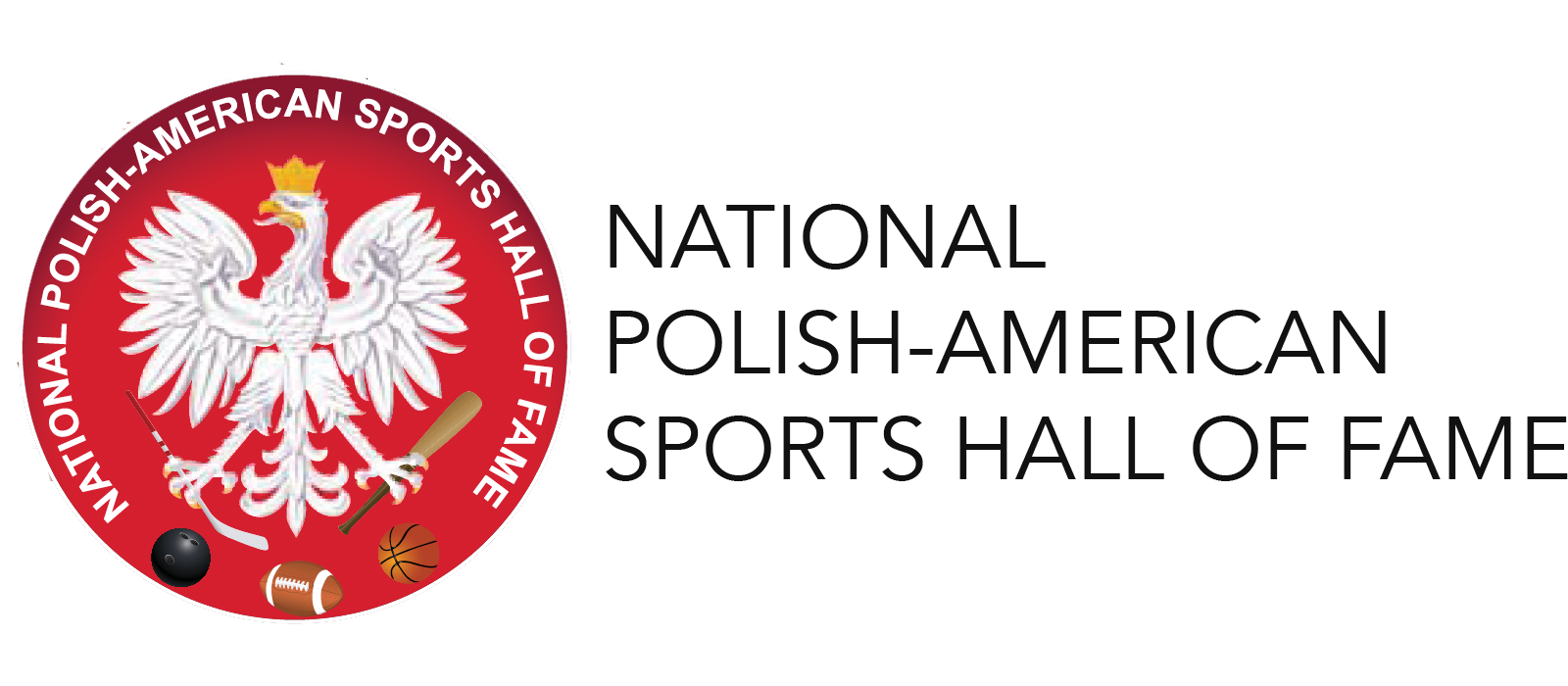
Dick Szymanski
Description
Inducted June 9, 1994
Few played football with the intensity of Dick Szymanski. Among his accolades: All-American in football and All-City in baseball at Libbey High School in Toledo; four-year starter at linebacker at Notre Dame (1951-54) including and for the Irish’s 1953 national champs; in a 13-year pro career, all with Baltimore, he was All-Pro three times and played on three championship teams, ending his career in Super Bowl III in 1969. In 1962, he switched from linebacker to center and became known as “Johnny Unitas” center. He was named center on the Colts Silver Anniversary Team in 1977. After his retirement, Szymanski remained with the Baltimore organization for 14 more years as scout, personnel director, coach and executive vice president and general manager. He was executive director of the NFL Alumni in 1991-92.
INDUCTION BANQUET PROGRAM STORY — June 9, 1994
Few have played the game with his intensity
By: Don Horkey
Few men have played football with the intensity of Dick Szymanski – and he has the trophies and accolades to show for it. Consider:
- An All-America in football and All-City in baseball and basketball at Libbey High School in his native Toledo, Ohio.
- A four-year starter at Notre Dame (1951-54), Szymanski was a linebacker for the Irish’s 1953 national champion.
- In a 13-year pro career, all with the Baltimore Colts, he was named All-Pro in 1956, 1963 and 1965, and played on three championship teams: 1958, 1959 and 1968, winding up his career in Super Bowl III in January 1969.
In choosing Notre Dame, Szymanski realized a lifelong dream. He played for the legendary Frank Leahy and Terry Brennan, earning four letters and a degree in business administration along the way. Despite an injury that required surgery late in his senior year, Szymanski started at center for the 1955 College All-Stars that upset the NFL champion Cleveland Browns 30-27.
A brilliant rookie season with the 1955 Colts earned Szymanski a berth on the All-Pro squad. Drafted into the Army, he spent the 1956 season with the Special Services in Germany.
When he returned to the Colts in 1957, he was switched from center to linebacker. He played both positions for the next five years until 1962 when he returned exclusively to center and became known as “Johnny Unitas” center. Szymanski, who stood 6-foot-3-inches and weighed 235-pounds in his prime, was named center on the Colts’ Silver Anniversary Team in 1977.
After his retirement, Szymanski remained with the Baltimore front office in a variety of responsibilities including scout, assistant personnel director, offensive line coach, director of player personnel, and, in 1977, executive vice president and general manager.
Szymanski left the Colts after 27 years to accept a job as scout with the Atlanta Falcons in 1982-84, then joined the NFL Alumni as vice president for chapter relations, overseeing the operations of the charitable organization’s national network of 30 chapters. He was executive director in 1991-92.
Since 1964, Szymanski has been married to Patricia Ann Kennedy. They have two children, and now live in Boca Raton, Florida.
Fighting Irish Polish Hall of Fame
Szymanski played football from 1951 to 1954 following in the footsteps of 1980 NPASHF inductee Ziggy Czarobski (at ND 1942-43, 1946-47), 1978 inductee Johnny Lujack (ND 1943, 1946-47), and 1988 inductee Leon Hart (ND 194649). Lujack and Hart were Heisman Trophy winners.
Playing Over Injuries a Way of Life
Playing through injuries was a way of life in the National Football League in years past. However, as rugged as he was, Dick Szymanski couldn’t finish out the 1958 season after injuring his knee against the Chicago Bears during the eighth game of the season.
Szymanski was the only Colt who didn’t make it to the 1958 championship game against the New York Giants, the infamous overtime game the Colts won behind the heroics of Johnny Unitas.
Teammate Art Donovan, in his autobiography, “Fatso: Football When Men Were Really Men,” recounts the time when Szymanski hurt his knee:
We were coming out of the locker room at Wrigley to get on the team bus and I offered him a hand. I think I asked him if I could carry his shoulder bag or something innocuous like that. At any rate, he got all indignant, yelling at me, ‘Don’t you worry about me, Fatso, I’m just fine! I’ll be seeing you in practice Tuesday and I’ll be kicking your ass!’ Yet whenever that bus hit a bump on the way to the airport, I noticed old Syzzie was squirming in pain. In those days, you just didn’t want to show it.
We drank beer all the way home on the plane, and that seemed to improve Syzzie’s outlook. Be sure enough, when I called his apartment the next moming to check up on him, his landlady told me he had checked into Union Memorial Hospital. I found out he was being operated on, so I stopped by that afternoon just in time to see him being wheeled back into his room on a gurney.
He was in pain, yelling for more shots. But as soon as he saw me standing at his bedside, suddenly there was nothing wrong with him. I told him to take the shots while he could get them. But suddenly he didn’t need shots anymore. I figured I better get the hell out of the hospital before Syzzie went into shock from refusing painkillers in front of a teammate. And I was the guy’s best friend. Imagine if a coach or an owner had walked in. He probably would have been doing jumping jacks.
Categories
- 1994
- Football

